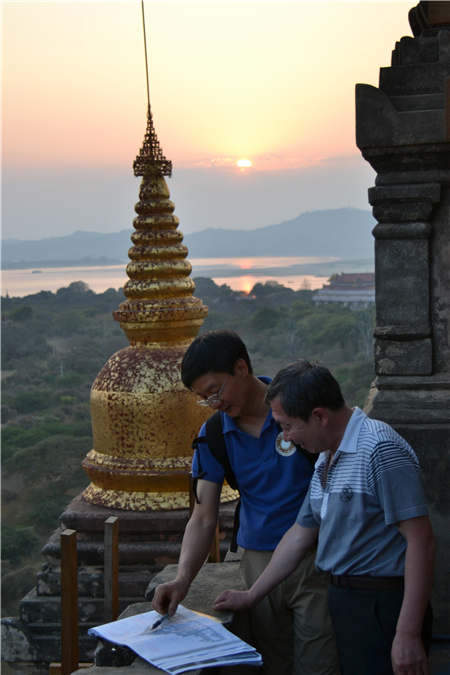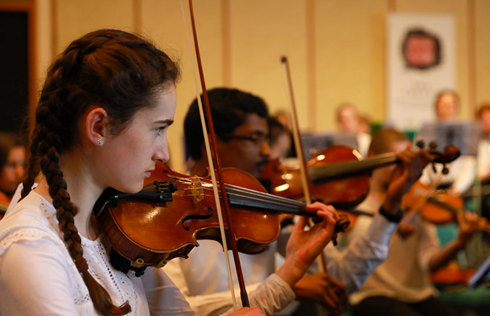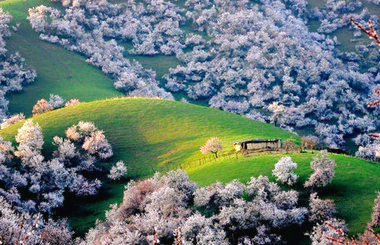Time travelers
 |
|
Chinese archaeologists Li Bingnan (left) and Yuan Yujie discuss the architectural structure of Thatbyinnyu Temple in Myanmar. [Photo courtesy of the Chinese Academy of Social Sciences] |
Wang led the first team to Copan in July 2014, accompanied by William Fash, a Harvard University archaeologist who started excavating in Honduras in the late 1970s. Although China came to the party fairly late, Fash says he had great confidence in Chinese archaeologists' abilities and strongly believed they would contribute to the study of Mayan civilization.
In the Mingtepa project, Chinese archaeologists employed a unique China-made tool known as a "luoyang spade". Through five excavations, they successfully broadened the excavation site size and proved that over 2,000 years ago Mingtepa was not simply a provisional garrison fort for nomads, but a fully functional castle, the largest in the Fergana Valley.
Li's team also used drone cameras, high resolution professional software and 3-D modeling in their work, which proved more efficient and accurate than established local practices in recording the location, topology and properties of features and items within the excavation grid.
The Mayans often built over existing sites, a testament to their belief in the life-cycle theory. For the excavation of 8N-11, Li adopted the conventional approach of tunneling. He was careful to examine and record the colors and properties of the soil. A little over a year later, Li had a clear picture of four main stages of construction, destruction and reconstruction of the 8N-11 complex structure. He was able to answer many questions related to the development of divine kingship, expressions of cosmology, roads, architecture and sculptures, and to conjecture about the causes of the collapse of Mayan dynastic rule.

















